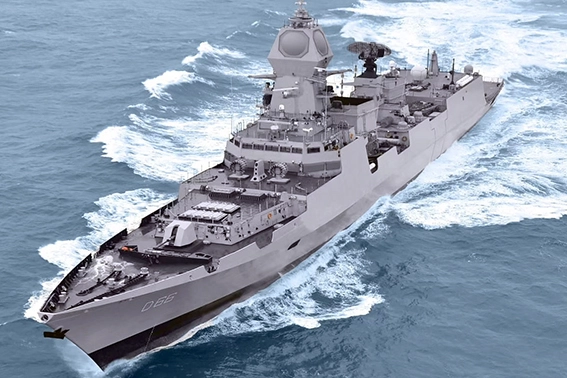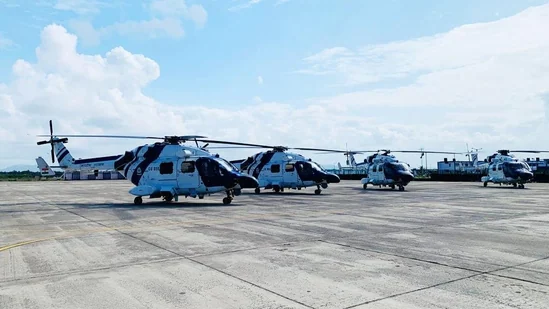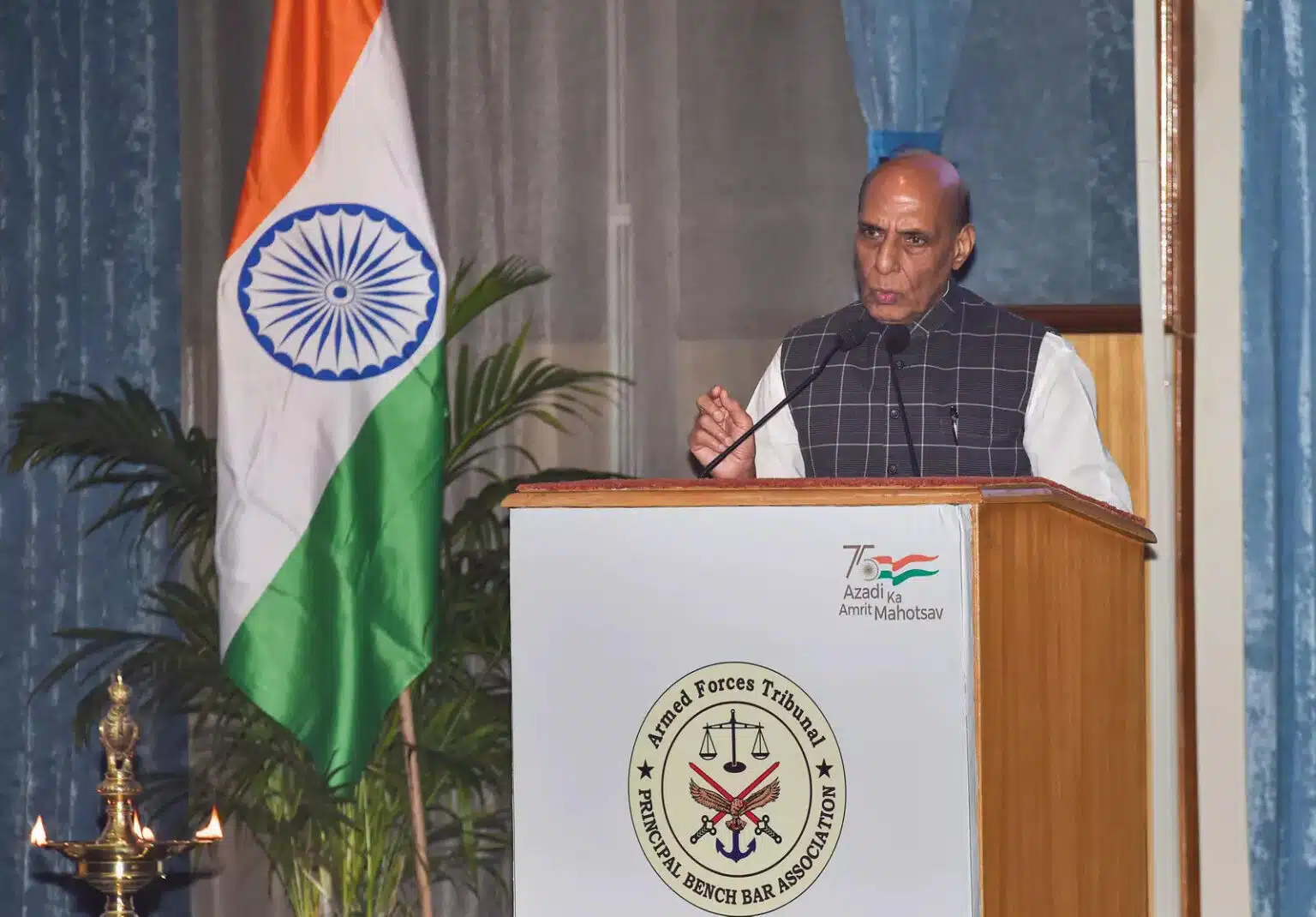With the aim of indigenization of military hardware and advancement of armed forces, the Defence Ministry of India has cleared the decks for the various guns, aircraft, supersonic missiles, artillery guns, maritime helicopters, etc. which will be divided among all the forces of India.

To ensure the security of the nation and pose a strong deterrence to various other countries India needs to procure and produce the necessary advanced weapons. The government has been focused and also promoting the indigenisation of defence technology regarding which, the plan of purchasing indigenously developed military equipment worth ₹70,584 crores has been approved.
The Defence Acquisition Council (DAC) chaired by Defence Minister Rajnath Singh has approved the Acceptance of Necessity (AoN) plan for military equipment which is under the most important category of acquisition for the IDDM (Indigenously, Designed, Developed, and Manufactured) category. A large chunk of spending of about 56,000 crores will be carried on the Indian Navy’s requirement for the Indigenous BrahMos missiles, Shakti Electronic Warfare System, and Utility Helicopters Maritime. This leap will not only boost self-reliance in the defence sector but also reduce the dependence on other foreign vendors as said by the Defence Minister
BrahMos Supersonic Cruise Missile Purchase Approved by Defence Ministry

Procurement of BrahMos will be done for the Indian Navy, it is a medium-range stealth ramjet supersonic cruise missile that can be launched from Ship, Submarine, Aircraft, and Land. It has the content which has most of the Indigenized content and will be deployed on all of the frontline warships of the Indian Navy.
This additional order of Brahmos will enhance the maritime strike and anti-surface warfare operations, BrahMos Aerospace is a joint venture of Russia and India named after the Brahmaputra and the Moskva River. Recently the testing of this missile was done and the deployment of Indigenous Seeker has started. Seeker is a system that guides and tracks the missile on the right trajectory to ensure that the missile hits the right target also its range of it has been increased from 290 Km to 400 Km.
The Indian parts and systems have been increased which will encourage a larger participation of the private industries, manufacturers, firms, and startups in India
Utility Hepters procurement
The government has also issued the procurement order for Utility Helicopters for the Indian Navy, which are made by Hindustan Aeronautics Limited (HAL). These Hepters are the advanced version of the Advanced Light Helicopter (ALH) Dhruv. On the basis of Dhruv Hepters three more categories of excellent helicopters have been made which consist of Light Combat Helicopter (LCH) Prachand, Armed Utility Helicopter (AUH) Rudra, and Light Utility Helicopter. Since the induction of utility helicopters, Indian Navy’s search and rescue operations, casualty evacuation, and humanitarian assistance are bound to be more effective.
Shakti Electronic Warfare (EW) Systems

For the Indian Navy, Shakti EW systems will also be bought. These EW systems will strengthen and modernise the frontline naval ships to counter the adversaries in any operations, Shakti is an Advanced Electronic Warfare System which is in Hyderabad, developed and designed by the Defence Electronic Laboratory which is part of the Defence Development and Research Organization.
It has been designed for the purpose of Interception, Detection, Classification, Identification, and Jamming of Conventional and Modern Radars in the Indian Navy’s Apex Warships. Shakti EW aims to ensure survivability in maritime battlefields and provide an electronic protection layer against modern radars and Anti-ship Missiles. It will replace the earlier generation attacks EW systems and will provide White Band Electronic System Measures (ESM) and will be integrated with Electronic Counter Measures.
The ESM of the system helps to determine accurate direction and interception finding for the post-mission analysis and includes Building Radar Fingerprinting and Data Recording Replay Feature. Under Make-I category approval of AoN, it is an important step for the Medium Speed Marine Diesel Engine, this is the first time that Indian-style engines are venturing into Development and Manufacturing to take the advantage of Indian Industries.
Plan for Indian Army
Defence Acquisition Council has also approved and sanctioned AoN for Indian Army’s new artillery modernisation proposal, under which 307 Advanced Towed Artillery Gun Systems (ATAGS) will be bought, its approval for the procurement was awaited for a long time. Indigenously developed 155mm/52 calibre ATAGS has been developed by DRDO, Bharat Forge, and TATA Advanced systems, this will be the first order for the howitzers which can target 50 km of distance. Along with it High Mobility Vehicles (HMVS) and Gun Towing Vehicles (GTVS) approval has been given to AoN.
DHRUV Hepters for the Indian Coast Guard

DAC has also approved 9 Advanced Light Helicopters (ALH) Dhruv for the Indian Coast Guard; it will enhance the Day and Night Flying Capacity of the ICG. These helicopters will be equipped with a suite of surveillance sensors to enhance surveillance capabilities, Full Night Capability, and Instrument Flight Rules (IFR) capability to enhance Coastal Security. Earlier in 2017, 16 ALH Dhruv were ordered by the ICg to Hindustan Aeronautics Limited and all these hepters have been deployed at Porbandar, Kochi, Chennai, And Bhubaneswar, 2 ALH Dhruv Mk-III were inducted in Andaman and Nicobar Tri-Services Command last year in 2022.
Additional Bunkers will be built in Jammu and Kashmir

Indian Army is currently building more than 4000 bunkers across the Line of Control (LoC) and International Border (IB) which is soon to be complete, these bunkers come under 0-3 Km of Loc and IB. 99% of the approved proposal will be from Indian companies and this quantum of indigenous procurement will propel Indian industries to achieve the goal of ‘Atmanirbhar Bharat’. Currently, Indian Army is paying special attention to changing its working system and modernising itself
In the ongoing fiscal year, the Indian government has set aside 2.71 lakh crore rupees for capital acquisition for defence forces out of which 99% of the procurement will be from Indian industries which will help India to achieve its goal of Make in India and being a self-reliable country.












